Average air temperature is quite a complex category as it depends on myriad factors, hence this list of 11 countries with highest average temperature in the world wasn’t exactly easy to compile. Luckily, complete and even compiled weather data can be obtained freely on database websites like weather database, for instance. World Bank is a reputable organization that contains a plethora of databases too – historical weather database including. Bear in mind that in order to get insight into World Bank’s database, you’ll have to download the MS Excel file that holds the info.
Differences between these two sources are as follows. The former database doesn’t give us years during which the temperature has been measured. Instead, it gives us the number of years which depend on the availability of the respective data. We also have to take into account the fact that weather changes over time thanks to a number of natural phenomena like El Niño and La Niña, for instance. Weather Database can stretch across more than 100 years of raw data which greatly impacts the end-result thanks to a number of these phenomena over the cumulated years. On the other hand, World Bank gives us the averages for the fixed period that stretches between 1961 and 1999. While we don’t know if the former source has recent years embedded into the end-result, we do know that latter source certainly doesn’t offer us that commodity.
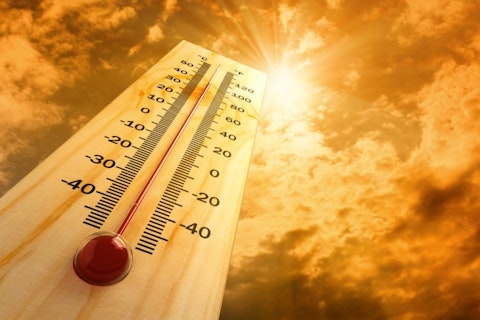
VladisChern/Shutterstock.com
While you’re here, you might take a look at the list of 10 Countries with Highest Average Height in the World. While it isn’t scientifically proven, maybe people tend to grow taller in certain types of climates. Joke aside, this list of 11 countries with highest average temperature in the world will hold countries that find themselves exclusively in the Tropics or Subtropics. Former stretches from the Tropic of Cancer to the north, to the Tropic of Capricorn to the south, or around 23° in both directions. Subtropics continue where the Tropics have left off and stretch towards the 38th parallel in both northern and southern hemispheres.
Being in Torrid geographical zone (consists of mentioned Subtropics and Tropics) is country’s main prerequisite for constantly high annual temperatures. However, it’s not the only one. Climate zones and terrestrial biomes can also play an important role, especially if we consider deserts. But let us not delve so deep into the subject at hand.
We have used both sources’ data and compiled one more precise list. This way, we have been able to check if the sources do consist of correct and relevant data. Overall, differences still aren’t that high, but are noticeable nevertheless. Consider the fact that hottest places in the world don’t necessarily have to be in some of these countries as they can be big or small, and one place can rarely represent the entire country. Ultimately, it’s always better if you can double check the given data by comparing it with additional sources. Oh, and for your convenience, we have compiled the report in both Celsius and Fahrenheit figures.
11. Chad
Average annual temperature: 26.93 °C – 80.47 °F
The Republic of Chad is quite a large African country spreading across 495,753 square miles, which make its appearance on this list even more impressive. Referred to as “Dead Heart of Africa”, most of Chad is under the influence of the Saharan desert when it comes to climate. Average temperatures don’t drop below 22 degrees Celsius or 71 degrees Fahrenheit even during December and January, which are the coldest months in this landlocked African country.

10. Ghana
Average annual temperature: 26.98 °C – 80.56 °F
One of many hot West African countries, Ghana takes position number 10. It’s basically positioned at our planet’s center point being on a longitude between 4° west and 2° east, and only 4° north of the Equator. Ghana is actually closer to Earth’s center than any other country in the world. With this in mind it’s no wonder that tropical climate impacts both dry and wet seasons in this country and that average monthly temperatures don’t fall below 25 °C or 77 °F.

Sopotnicki/Shutterstock.com
9. Benin
Average annual temperature: 27.18 °C – 80.92 °F
Another country open towards the Gulf of Guinea, Benin finds itself entirely in northern Tropic. There are precious few variations in climate from southern Atlantic coast to northern hilly regions which are clearly evident by the average annual temperature. Still, If you would like to cool yourself while in Benin, try the northern part of the country. Avoid the winter period between December and March, however, because that’s the time when Harmattan, dry Saharan wind tends to cause a number of problems to the local population.
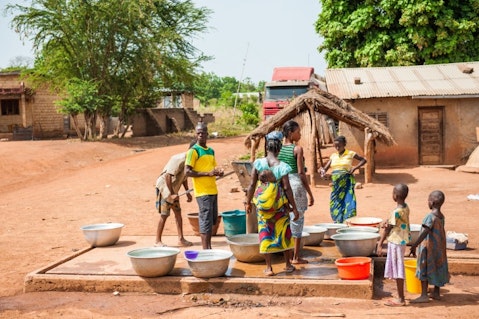
Anton_Ivanov/Shutterstock.com
8. Sudan
Average annual temperature: 27.36 °C – 81.25 °F
Before South Sudan ceded from rest of Sudan in 2011, this east-central African country used to be the biggest on the “black continent”. This, however, didn’t change much in Sudan’s temperature ratings as northern, desert part of the country has remained where it always was. Nubian and Bayuda deserts make a large percent of Sudan’s traditionally hot territory. Since southern parts of the country lie close to the Equator, it’s easy to see how such a vast territory manages to stay hot throughout the entire year.

7. The Gambia
Average annual temperature: 27.39 °C – 81.3 °F
The Gambia would have been a landlocked country if it weren’t for the Atlantic ocean. Country cuts deep into Senegal from west to east, but it still remains one of the smallest mainland countries in Africa. The climate is tropical and woe to you if you find yourself there during the hot, rainy season which lasts from June to November. Until May, temperatures are generally lower to a little extent, but they heat up in a hurry during the mentioned month.
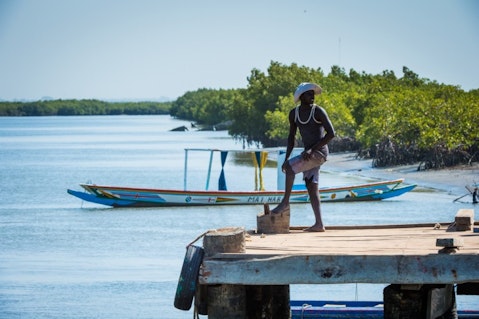
Anton_Ivanov / Shutterstock.com
6. Niger
Average annual temperature: 27.57 °C – 81.63 °F
Country named after the river Niger is entirely landlocked and mostly Saharan. Sahara desert actually takes more than 80 percent of country’s area and it’s easy to see why Niger takes position number six in our list of 11 countries with highest average temperature in the world. Desert, however, doesn’t stretch towards the south, but that’s where tropical heat tends to even things up. All in all, Niger is one very hot country with temperatures dropping below 20 °C or 68 °F only during January. However, this is compensated with over 30 °C – 86 °F from April to September.
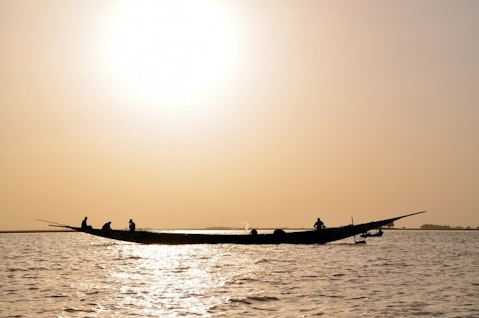
5. Mauritania
Average annual temperature: 27.6 °C – 81.68 °F
Another Saharan country in Western Africa, Mauritania exhibits similar temperature oscillations like its eastern neighbor, Niger. While it does have an Atlantic ocean strip, 90 percent of Mauritania is still a desert. That is why temperatures between May and September don’t drop below 30 °C or 86 °F, and unlike in Niger, they don’t drop below 20 °C or 68 °F neither.
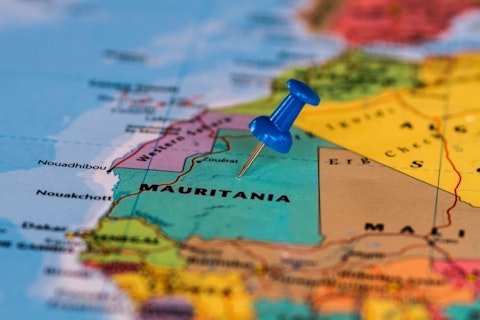
Wead/Shutterstock.com
4. Senegal
Average annual temperature: 27.64 °C – 81.75 °F
Positioned south of Mauritania, Senegal doesn’t spread across the Sahara desert, but its northern parts come into touch with Sahel which is a transition zone between the desert and savanna. This is why Senegal features more evenly matched monthly temperatures, but overall, annual mean is still very hot. Whether it’s the tropical heat of the south, desert heat of the north or dry, semi-arid climate of the inland, Senegal remains mostly dry, sunny and above all, hot country.

klublu/Shutterstock.com
3. Djibouti
Average annual temperature: 28.07 °C – 82.53 °F
Found in the Horn of Africa, Djibouti divides Eritrean and Somali coastlines and controls western side of Bab-el-Mandeb; southern entrance to the Red Sea. It has a territory of only 8,958 square miles which makes things rather simple, climate-wise. The coldest month is December with the average temperature of 23.67 °C or 74.61 °F, while hottest month is July with a mean temperature of 32.38 °C or 90.28 °F.

Dereje/Shutterstock.com
2. Burkina Faso
Average annual temperature: 28.19 °C – 82.74 °F
Back to Western Africa now. Burkina Faso finds itself just north of Ghana and Benin, and west of Niger which have also found their way to this list of 11 countries with highest average temperature in the world. Temperatures here don’t drop below 25 °C or 77 °F, but differences can be noticed between northern and southern parts of the country. Actually, Burkina Faso can be divided into three climate regions: Sahel, Sudan-Sahel and Sudan-Guinea, from north to south respectively. We have already mentioned what Sahel is, while next zone represents a transition between Sahel and Sudanian Savanna. Finally, Guinea Savanna receives more rain and exhibits slightly lower overall temperatures.
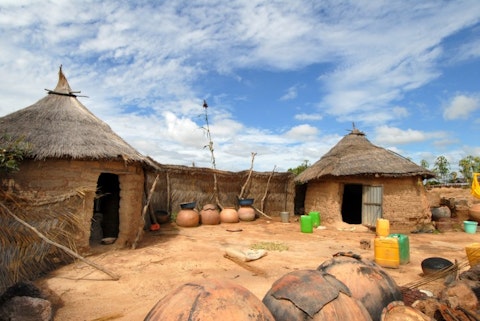
africa924/Shutterstock.com
1. Mali
Average annual temperature: 28.25 °C – 82.85 °F
With average monthly temperatures reaching as high as 33.38 °C or 92.08 °F in June, Mali takes the first spot as the hottest country in the world when average temperatures are concerned. It’s no wonder, really, since Mali borders with no less than four countries that have already made the list (Niger, Mauritania, Senegal and Burkina Faso). Most of the country is Saharan, but large parts still fall under hot, semi-arid climate. Tropical south takes a small chunk as well, but the only thing that changes is precipitation. Temperatures are still alarmingly high throughout the year with the lowest average in December (21.65 °C or 70.97 °F).
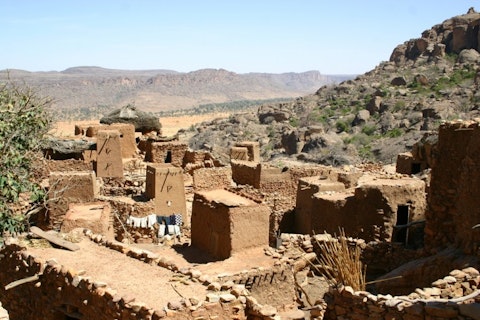
James Michael Dorsey/Shutterstock.com
It’s no wonder why all 11 countries with highest average temperature in the world on our list are African countries. Equator, Sahara, and hot tropical savannas all play their part in creating extremely arid and hot landscapes across most of the African continent’s mid-line. Next country on the list would have been Cambodia and then Qatar, which find themselves in Asia, but only the United Arab Emirates on position number 15 and Thailand, which is 20th would have somewhat diluted top 20 list of African countries’ supremacy in the claim for world’s countries with highest average temperature.





